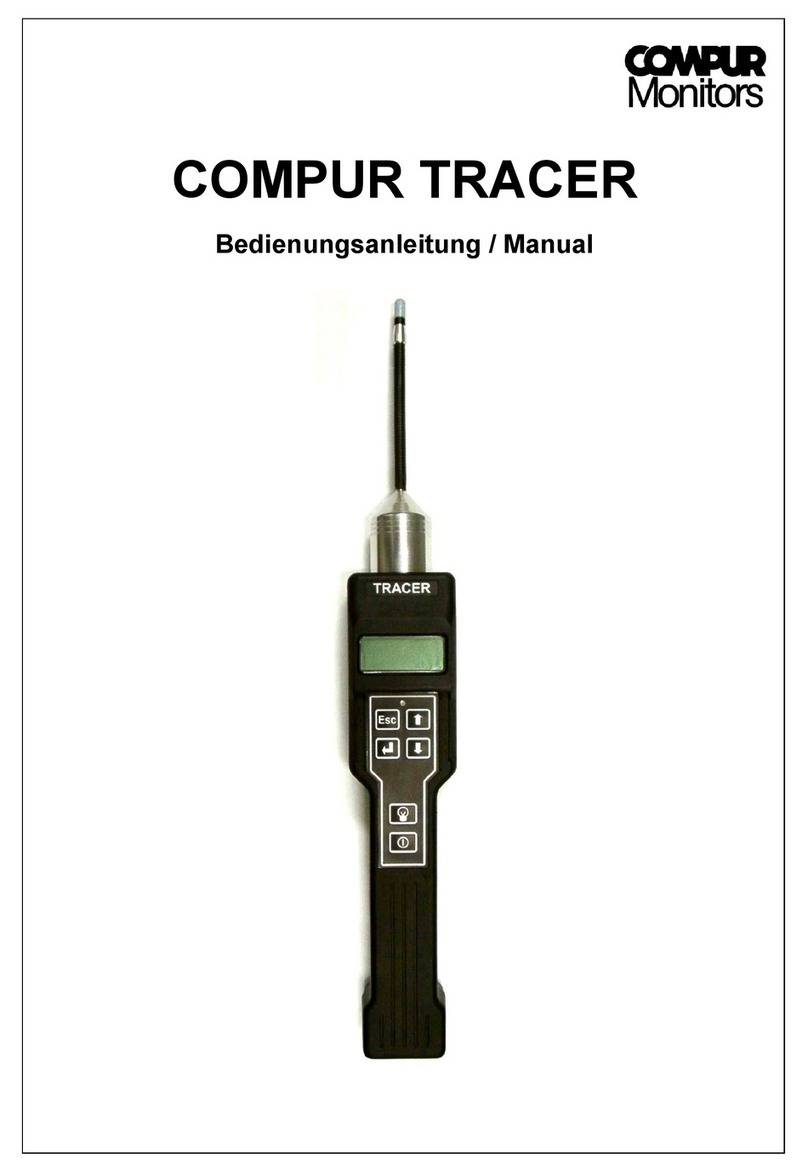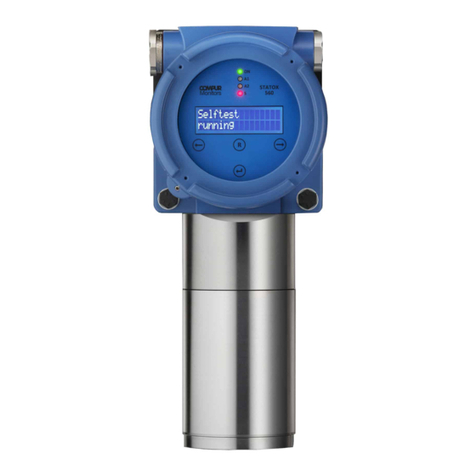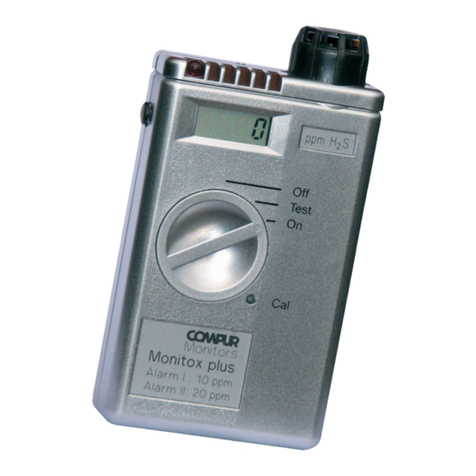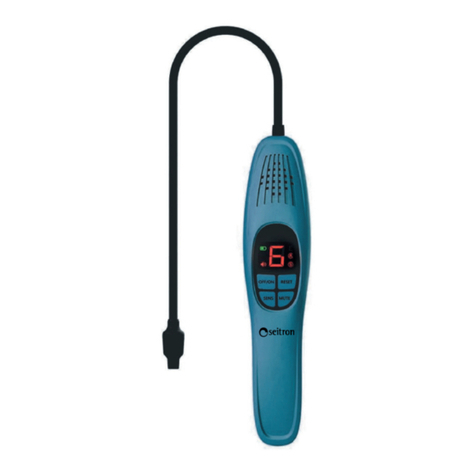
4. Elektrischer Anschluss
4. Electrical Connection
Es sollten geschirmte Leitungen ≥0,75 mm2verwendet
werden. Die Messköpfe können im Drei-Draht-oder im
Fünf-Drahtanschluss betrieben werden.
Drei-Drahtanschluss: Bei Leitungslängen bis 750 m
und geringen Temperaturschwankungen. Wenn die
Versorgungsspannung am Messkopf kleiner ist als 3,0 V,
dann wählen Sie den Fünf-Drahtanschluss.
Fünf-Drahtanschluss: Bei Leitungslängen über 750 m
oder großen Schwankungen der Umgebungstemperatur.
Mit den beiden zusätzlichen Senseleitungen kompensiert
das Control Modul alle leitungs- und temperaturbedingten
Schwankungen der Messkopfversorgung selbstständig.
Die maximale Leitungslänge beträgt 3000 m.
Achtung:
Beachten Sie unbedingt die Bedienungsanleitung des
Control Moduls, Punkt 2, bei der Inbetriebnahme!
Wählen Sie vor dem Anschluss das entsprechende
Betriebsprogramm (siehe Kapitel 4.1). Ein falsch
eingestelltes Betriebsprogramm kann zur Zerstörung des
Sensors führen!
Bei großen Potentialdifferenzen zwischen einzelnen
Anlagenteilen sollte der Schirm nur einseitig am Control
Modul aufgelegt werden.
Nach dem Anschluss muss eine Kalibrierung (siehe
Kapitel 5) durchgeführt werden.
Use shielded cable with at least 0,75 mm2. The sensor
heads can be operated in a three or a five - wire mode.
3 wire mode: For cable lengthes up to 750 m and
little variations of ambient temperature.
If the voltage at the sensor head supply is lower than 3,0 V
select 5 wire mode.
5 wire mode: In case of cable length above 750 m or
significant variations of ambient temperature.
Two additional sense wires measure the actual sensor
supply voltage.The controller will compensate supply
voltage variations automatically if required.
The maximum cable length is 3000 m.
Attention:
To start up we recommend to observe the operating
instructions of the Control Module, point 2!
First of all select the appropriate operating program (see
chapter 4.1).
Selecting the wrong program can destroy the sensor!
If significant ground potential differences are present, it
might be a better choice to isolate the sensor head housing
from the shield. After the installation the sensor head must
be calibrated (see chapter 5).
4.1 Anschluss an das Statox 501 Control Modul 4.1 Connection to a Statox 501 Control Module
Wählen Sie das entsprechende Betriebsprogramm am
Statox 501 Control Modul (ab Software-Version 2.1):
•Messkopf für 0-10 Vol% CO2: Prog. Nr. 70
•Messkopf für 0-100 Vol% CO2: Prog. Nr. 71
Schließen Sie nun den Messkopf an (siehe Bild 2).
Ist die Versorgungsspannung am Messkopf an den
Klemmen 2 (+) und 4 (-) kleiner als 3,0 V, dann wählen
Sie den Fünf-Drahtanschluss.
Select the relevant program at the Statox 501 Control
Module (software version 2.1 or higher):
•Sensor head CO210 % Vol.: prog. no. 70
•Sensor head CO2100 % Vol.: prog. no. 71
Then connect the sensor head (see pct.2).
If the supply voltage at terminals 2 (+) and 4 (-) is lower
than 3,0 V select 5 wire mode.
4.2 Anschluss an ein PLS 4.2 Connection to a PCS
Wenn Sie den Statox 501 LCIR CO2direkt an einem
Prozessleitsystem betreiben, dann beachten Sie folgende
Kenndaten:
• Versorgungsspannung 3,0 – 5,0 VDC
• Stromaufnahme ca. 80 mA.
Der Messkopf darf nicht mit Konstantstrom betrieben
werden, dies kann zur Zerstörung des Sensors führen!
Anschlussschema siehe Bild 3.
If connecting the Statox 501 LCIR CO2directly to a PCS,
observe the following data:
• Supply voltage 3,0 – 5,0 VDC
• Power input approx. 80 mA
Never supply constant current to the sensor head, it might
damage the sensor.
Connection diagram see picture 3.
4




























